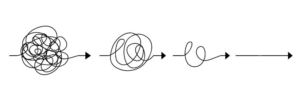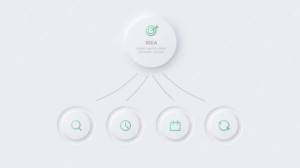Hello, and welcome to this week’s Friday Fresh!
Today, we’re diving into a fascinating subject that can elevate your course design to new heights: Cognitive Load Theory.
As a training provider or educator, understanding how your learners process information can make a world of difference to the effectiveness of your courses. So, let’s explore how you can use this theory to design better courses that enhance learning and retention.
What is Cognitive Load Theory?
Cognitive Load Theory (CLT) suggests that our brains have a limited capacity to process and store information at any given time. Essentially, there’s a threshold to how much information we can take in before we feel overwhelmed, and that threshold is often lower than we might think.
The theory divides cognitive load into three categories:
- Intrinsic Load: The complexity of the material itself.
- Extraneous Load: How the information is presented.
- Germane Load: The work your brain does to make sense of and internalise new information.
When designing courses, the goal is to reduce extraneous load (method of delivery) and manage intrinsic load (simplification of material) so that learners have enough mental bandwidth left to focus on the germane load (processing information), where real learning takes place.

How to Apply Cognitive Load Theory to Course Design
Now that we understand the types of cognitive load, let’s look at how you can apply this knowledge to create better courses.
1. Simplify Your Content
Complex topics are inevitable, but overwhelming your learners with too much information at once is counterproductive. Instead of cramming in every possible detail, break complex subjects into smaller, manageable chunks. Focus on one key point per section to avoid overloading their working memory.
Tip: Use clear, concise language and avoid unnecessary jargon. Simple doesn’t mean less intelligent – it means more effective!
2. Limit the Number of Learning Objectives
It’s tempting to pack multiple learning objectives into a single lesson or module, but this adds to the intrinsic load. Stick to a few essential objectives and build your content around them. This focused approach ensures learners can grasp and retain the key points without feeling overwhelmed.
Insight: Learners are more likely to retain information if each module has a distinct, clear purpose rather than trying to achieve too many things at once.

3. Use Visual Aids Wisely
Visuals are powerful tools, but only when used effectively. Bombarding learners with excessive graphics or complicated diagrams can increase the extraneous load. The trick is to use visuals to complement your text, not to compete with it.
Tip: Opt for simple, clean visuals that directly reinforce the learning points. For complex processes, break down diagrams into progressive steps, showing only what’s necessary at each stage.
4. Leverage Prior Knowledge
Your learners come with their own set of experiences and knowledge. Build on what they already know rather than introducing too many new concepts at once. This helps to reduce intrinsic load because they’re not starting from scratch.
Tip: Start each new section with a quick refresher of previously covered material or include a relatable example from real-world scenarios to help learners bridge the gap between old and new knowledge.

5. Interactive Learning to Boost Germane Load
Active learning techniques such as quizzes, discussions, and problem-solving activities can help strengthen the germane load. These methods engage learners more deeply, allowing them to actively process and apply the information. By making them “do the work,” you help them embed new knowledge into long-term memory.
Tip: Include frequent low-stakes quizzes or reflection exercises to encourage learners to think about what they’ve learned and apply it in different contexts.
6. Minimise Distractions
Avoid overloading learners with unnecessary information, flashy animations, or distracting background music. These elements may seem engaging, but they add to the extraneous load and detract from the main points of the course.
Insight: Every element in your course should have a purpose. If it doesn’t help the learner understand the content, consider leaving it out.
Final Thoughts
Cognitive Load Theory isn’t just academic theory – it’s a practical tool you can use to create courses that are easier to understand, retain, and apply. By reducing cognitive overload and focusing on what really matters, you can ensure your learners have the mental space to absorb and engage with the content you’ve worked so hard to create.
By simplifying, focusing, and strategically engaging your learners, you’ll be able to design courses that stand out for their clarity, efficiency, and effectiveness.
That’s it for this week’s Friday Fresh! Take these insights and see how you can apply them to improve your courses. Remember, a well-designed course isn’t just about great content – it’s about how that content is delivered to ensure maximum impact.
Stay tuned for more practical tips and tricks next week!
Sign Up for the Friday Fresh Newsletter!
If you enjoy these articles, sign up for the newsletter and receive it straight into your email every week!







